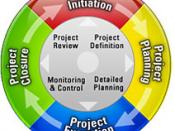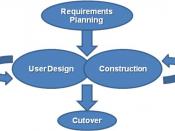Lifecycle Models and Methodologies
Introduction
Lifecycle models where developed in order to carry out tasks in a structured and logical way. Assuming that a project proceeds in a normal and orderly manor, there are steps that need to be followed, depending on what the particular project is. A good example of this would be; Requirements analysis, functional specification, design, implementation, testing and maintenance.
There are several types of lifecycle models. Two of the most commonly used are the waterfall lifecycle and the spiral lifecycle.
The Waterfall Lifecycle Model
The waterfall lifecycle was the first publicly documented life cycle model. The model was developed to help cope with the increasing complexity of aerospace products. It was first documented by Royce in 1970. The waterfall lifecycle is in theory a sequential model but as indicated in the example above by the upward pointing arrows it is necessary to be constantly going back and going over what has already been done.
This could be for trouble shooting or quality control proposes for example. It many cases it is not possible to continue the current task if the previous task is incomplete. On the other hand, if possible, it may suit the timetable of the particular project if two of the stages overlap each other. It would depend on the project that was being worked on.
As the waterfall model is a sequential lifecycle model, it is widely used in the manufacturing industry. A good example of this would be the motor industry as cars are assembled sequentially.
The advantage of the waterfall model is that it a very ordered lifecycle and it is clear to see the direction in which a project is heading. One of the down sides is however is the customer or client may have difficulty stating explicitly the...


